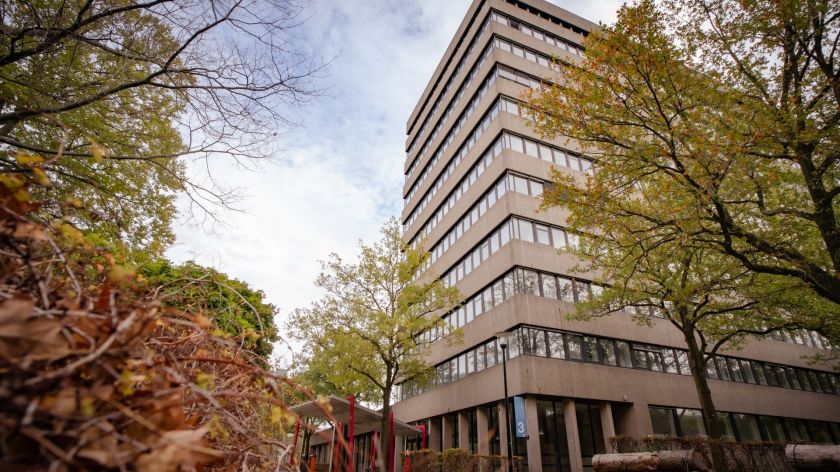New humanities building to be completed early 2027
-
 Het Spinozagebouw. Foto: Johannes Fiebig
Het Spinozagebouw. Foto: Johannes Fiebig
The new humanities building is likely to be as tall as the Spinoza building. Completion is scheduled for 2027, according to the tender published last weekend. Whether staff of the faculties involved will get their own rooms in the new building is not yet clear.
The new building for the Faculty of Arts and Philosophy, Theology and Religious Studies is supposed to be the first big realisation of the Campus Plan that was presented last spring.
At the moment, the Programme of Requirements is being finalised, in which the wishes and needs of the relevant faculties are inventoried. ‘These requirements have been collected from staff and students of the relevant faculties in recent months’, says Arjan de Wit, project manager of the new building. He stresses that the Programme of Requirements has yet to be approved by Radboud University’s Executive Board, Joint Assembly and Supervisory Board.
To not lose unnecessary time, the first phase of the tendering process has been launched. ‘In doing so, we hope to end up with four parties who are eligible to design the building’, says De Wit. ‘After that, we will ask these four parties to submit bids for the design.’
Circular solution
By and large, it is already known what the new building is supposed to look like. Radboud University wants to aim for ‘central zones’ to stimulate cross-pollination and meeting each other, which was stated in notes added to the tender, published by the Campus & Facilities department last weekend. The building will be built in the same location as the current Spinoza building. Construction will begin in 2025 and completion is planned for 2027.
The building is also supposed to become the most sustainable one on campus. With the help of CO2 emission reduction, the building is supposed to become ‘energy positive’. The goal is that materials in the Spinoza building will be reused as much as possible in the new building.
From commotion to tranquillity
At the very least, the hull – the skeleton – of the high-rise section of the Spinoza building will be reused. That means that the new humanities building will be as tall as the Spinoza building – in practice, an architect might get rid of one or two floors, if that fits better in the overall concept. ‘But since the minimum requirements of the new building are much higher, an extra section will be built and connected to the building’, says De Wit.
The costs are not yet final. The tender states that the design brief “is filled with too many insecurities to determine a final budget.”
In the building, a ‘from commotion to tranquillity’ principle should apply, according to the tender. “To accommodate both the need for calm and concentration, as well as the need for meeting and collaboration, the basic assumption is a bustling core that fans out into relatively quiet zones.”
Office with a bookcase?
Whether employees will also get their own office with a bookcase in the future building is not clear at the moment – the project description remains vague on that point. “For research and teaching to flourish, it is important that employees and students can form a community here,” the text reads. “By working with smaller clusters of spaces within the faculty zone, based on the functional and content-related affinity of activities, a small scale and findability can be ensured.”
‘The faculties have hired an advisor to further work out the working environment’
De Wit can also not confirm whether employees will get their own office in the future building, just like in the Erasmus building. ‘The faculties have hired an advisor on their own accord to further work out the working environment in the new building’, he says. ‘It is important that this fits within the frameworks of the Programme of Requirements.’
Radboud University’s Campus Plan, which was presented last spring, stated that more efficient accommodations in the new building should lead to “a reduction of around 35 percent of the current space requirements”, in which employees work from home more often. Employees of the relevant faculties did not like that at all. They worried about being able to keep their offices and started a petition to preserve permanent workspaces. With almost four hundred signatures, the organisers engaged in a dialogue with the Executive Board. The board could not make any promises, but pledged that they would use all input in future plans.
Translated by Jan Scholten



